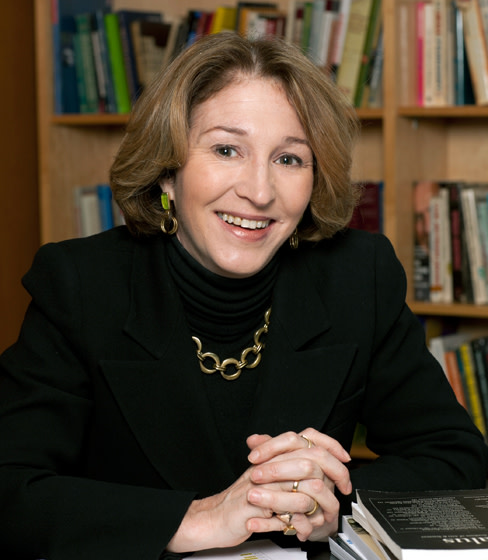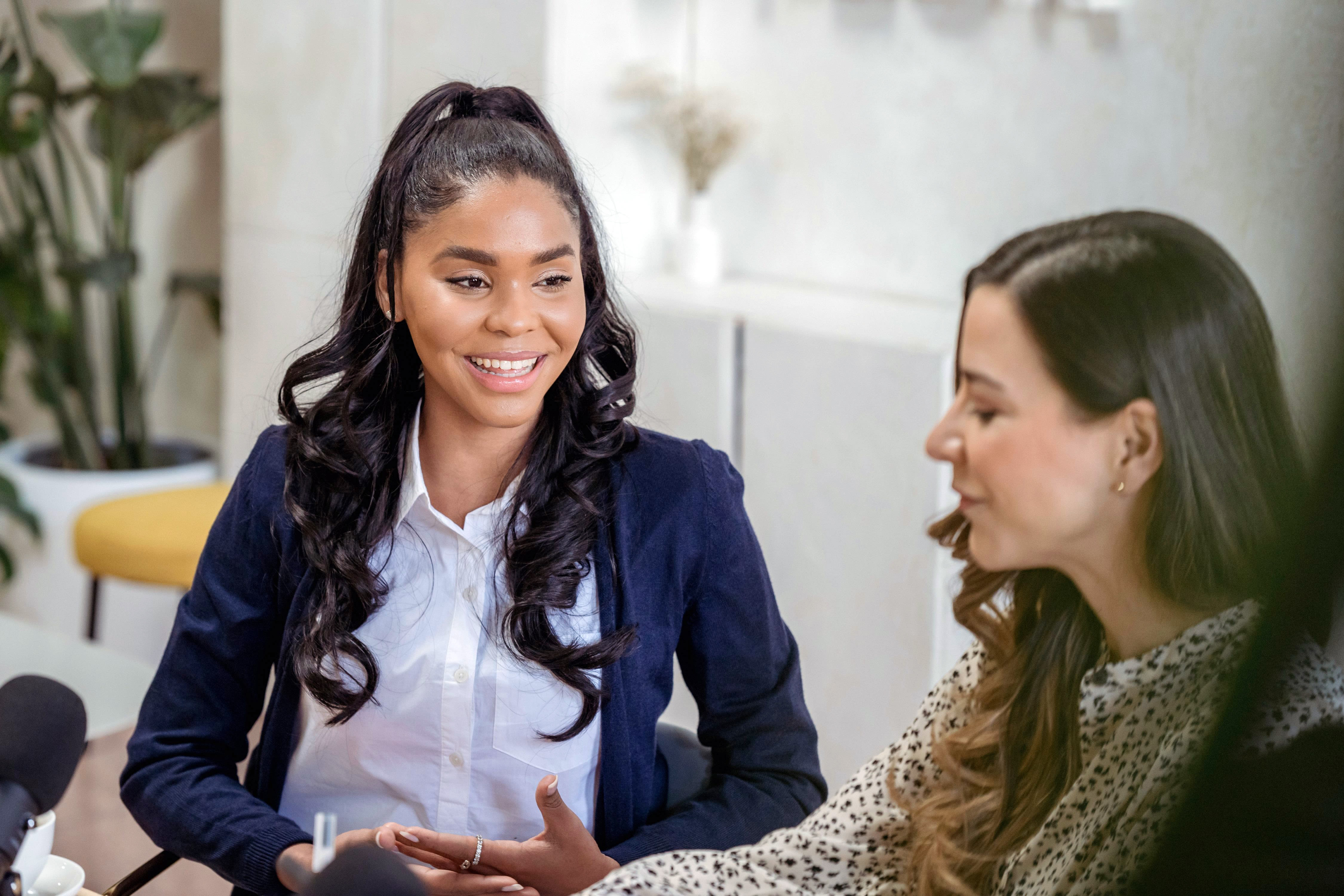Anne-Marie Slaughter on Women and the Workplace
By Megan McDonald
Dr. Anne-Marie Slaughter’s name catapulted to the forefront of dinner-table conversations everywhere last year thanks to her controversial article for The Atlantic, “Why Women Still Can’t Have It All.” The former director of policy planning for the State Department, Slaughter was inspired to write the piece based on the reactions of her peers after she left her job in Washington because she wanted to spend more time at home with her husband and two sons.
Slaughter, who currently teaches politics and international affairs at Princeton, contributes regularly to print and online media, often appears on TV and is working on a new book due out in 2014, will be in town in March as they keynote speaker for the Women’s Resource Center’s annual Renaissance luncheon, where she’ll give a talk about work-life balance. We caught up with her to talk about women in the workplace, the generation gap and, of course, her Atlantic article and the conversations she hopes it will inspire. Here’s what she had to say.
Did you expect such a tsunami of responses to The Atlantic article?
No. I did expect it to have an impact—I wouldn’t have written it otherwise—and I knew that it was going to be a cover story and that everybody who read it in the editing process had a very strong reaction. But I didn’t think it would be anything like this—I’ve never seen anything like it, and it continues!
How did you feel while you were writing the piece? It must have been emotional.
I’d never written anything like it before. I write a lot, all the time—but nothing that hit this close to home. It was a long process; it took almost a year and went through multiple drafts. The hardest part to write was that I wanted to go home. That took a while. It wasn’t just that I felt that my kids ought to have me at home during this period of their lives—it was that I didn’t want to miss them. Let me be clear, though: Even though I’m at home, I’m still working full-time and I’m on the road several days a week.
What did you want people reading the piece to do after they finished it?
The ideal response would be that people would say, “We need another wave of the feminist revolution—our work is not done.” But the responses have given me hope—I think we are heading for a work/family resolution, and that it’s happening among the younger men of this generation as well as women.
[The responses are] also part of a much bigger shift toward saner living. I love to work; Americans love to work. But there’s having work be a healthy and important part of your life and then there’s having work consume you, and that’s not good for anyone—not you, not your children, not our society.
In the article, you mention that there was a clear generation gap in the responses you received from young women in their 20s and 30s and older, boomer-age women. Is the divide still as sharp?
Well, there are plenty of boomer women who have written me to say that yes, they absolutely agree with what I’ve said, but they are [often] the women for whom the balance stopped working. Other women have written to say that they are making it work, and not to set [women] back by saying [that what they’re doing] isn’t working.
The reaction among young women—and young men—has been overwhelmingly positive. That’s not to say that they agree [with the article] entirely, but they’re the ones who are saying, “I want a different mix. I want more time with my kids than my parents had” or “The cost of making it professionally is too high in terms of what it requires me to give up.” There’s a sense that we need to have another round of this conversation; they don’t like the choices they see boomer women making or having had to make.
Your talk at the Women’s Resource Center’s Renaissance luncheon in March is called “Redefining Balance.” When women try to perform a balancing act, what usually trips them up first?
Well, every woman is different. But I think often something happens—whether it’s the birth of a second child, a move, a husband losing his job, you losing your job, a sick child, a sick parent—that tips that balance, and then suddenly [the woman] just can’t make it work anymore.
I think every woman would tell you that time with friends gets crossed off really fast, although I think many of us would think of that as a tradeoff we could live with. What you can’t live with is the people you love not getting what they need.
In terms of women and the workplace, do you think other countries generally have more humane office environments than we do in the U.S.?
It’s not even remotely close. In Germany, for example, you get a year of maternity leave per child. The woman takes four months, the man has to take four months, and they can divide the remaining four months however they want. In most European countries, the minimum you get is six months and it’s all paid, and those countries are increasingly providing incentives for husbands to take real time off, too—we’re talking months, not just two weeks—so they can bond with their child and start sharing the caregiving. We are one of three countries in the world, and the only first-world country, that doesn’t have [mandatory] paid maternity leave.
Are there any companies you would single out for other countries in the U.S. to emulate? For example, Google now gives new mothers five months of maternity leave with full pay, and men get seven weeks.
I think what’s striking about Google is that it encourages young fathers just as much as young mothers. There are also a growing number of law firms—the big ones, at least—that now have six-month maternity leaves. The Families and Work Institute also gives awards every year to corporations who do the best job of reconciling work and family.
In your article, you mention Michelle Obama, among others, as someone who you see as a role model for other women. Who else would you say that about?
I also mention Michèle Flournoy—she, too, has said that many young people thank her for being willing to say publicly that she’d worked for three years as the undersecretary of defense but was going to go spend more time at home with her children. Hillary Clinton is an amazing woman; so is Madeline Albright, who has three daughters and raised them divorced. I think there are a lot of women role models.
But the thing I want us to do is not just to see [a woman’s] measure of success as “she made it to CEO,” but rather as “she made it to CEO and she was able to be the kind of parent she wanted to be”—which may have included slowing down, stepping back, deferring a promotion.
Looking back on your career up until now, is there anything you would have done differently?
I’m totally satisfied, but that’s part of the reason I wrote the article. I’ve been blessed to work in the only industry where it’s 50/50 at the top—there are four male Ivy League university presidents and four female. And I’ve been really fortunate because I’m an academic. I can pursue the work I love and be as much of a full-time parent as I think is necessary. But my situation is the rare situation; not all workplaces can be like universities.
What advice do you give to young women who are just starting out in their careers?
They should read [Facebook C.O.O.] Sheryl Sandburg’s book, Lean In. It’s not enough, but I think what she’s saying in it is very valuable advice. And that’s also why I’m writing a book—to answer that question. I need to know more about what is working, what can work and what’s working in other countries to be able to offer advice to younger women.
What does your own schedule look like these days?
Working on these issues is now about 40 percent of my time. I am still working on foreign policy issues a great deal, but this has all added a whole other set of activities and obligations to what was already a very full life! [Laughs.] Making time for my kids has not gotten any easier!
To buy tickets to the Women’s Resource Center Renaissance luncheon, click here.




